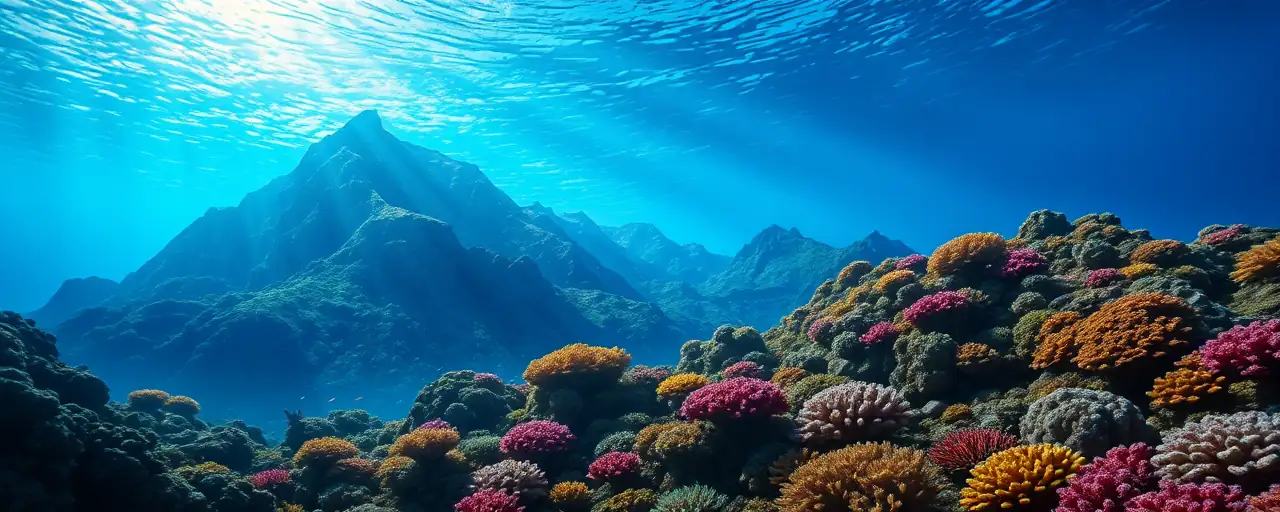A Glimpse Beneath the Waves
The ocean floor, a vast and mysterious expanse, has long eluded detailed exploration. While humanity has charted the Moon’s craters with precision, only a quarter of Earth’s seabed has been directly surveyed. That gap is narrowing, thanks to a groundbreaking effort led by a NASA-supported team. Using data from the SWOT satellite, launched in 2022 as a joint project with France’s space agency CNES, researchers have unveiled one of the most detailed global maps of the ocean floor yet, published in Science in December 2024. This leap forward promises to transform everything from navigation to scientific discovery.
Picture an underwater world teeming with towering seamounts and rolling abyssal hills, features that shape currents and harbor life in the deep. The SWOT mission, originally designed to measure water heights across Earth’s surface, has turned its sharp eye downward. By detecting subtle bumps in the sea surface caused by the gravitational pull of underwater formations, it reveals a hidden landscape. For those who rely on the ocean, whether mariners plotting routes or scientists tracing climate patterns, this is a game-changer.
Navigating a New Frontier
Accurate seafloor maps hold tangible benefits for people on the surface. Ships crisscrossing the globe depend on precise charts to avoid hazards and streamline journeys. Nadya Vinogradova Shiffer, a NASA oceanography expert, points out that detailed mapping supports a range of practical needs, from laying communication cables to pinpointing sites for seabed mining. With global trade and internet connectivity hinging on undersea infrastructure, the stakes are high. The SWOT data, capable of spotting seamounts half the size of those detected by older satellites, could reduce risks and cut costs.
Beyond commerce, there’s a strategic angle. Nations are eyeing the ocean floor not just for resources but for security. Detailed maps can guide submarine operations or protect vital pipelines, a concern sharpened by events like the 2022 Nord Stream sabotage. Yet, not everyone agrees on priorities. While some push for rapid mapping to unlock economic potential, others, like advocates for maritime safety, stress its role in preventing disasters. The technology bridges these interests, offering clarity where uncertainty once reigned.
Life and Heat in the Abyss
The ocean’s depths are more than a backdrop for human activity; they pulse with life and energy. Seamounts, underwater mountains rising from the seafloor, act like magnets for marine ecosystems. Their slopes concentrate nutrients, drawing fish and corals to otherwise desolate stretches. Abyssal hills, smaller but far more numerous, cover 70% of the ocean floor and play a similar role. Yao Yu, an oceanographer at Scripps Institution of Oceanography, notes their surprising visibility in SWOT data, shedding light on habitats long obscured.
These features do more than sustain biodiversity. They steer deep-sea currents, influencing how heat and carbon move through the planet’s climate system. Researchers see this as a key to understanding global warming’s ripple effects. However, the picture isn’t all rosy. Mining companies eyeing mineral-rich seamounts raise alarms among ecologists, who warn of habitat loss and sediment plumes that could choke marine life. The tension between resource extraction and conservation looms large, with no easy answers in sight.
Piecing Together Earth’s Past
The seafloor isn’t just a living system; it’s a historical archive. Abyssal hills, formed where tectonic plates pull apart, stretch in bands that trace millions of years of Earth’s shifting crust. David Sandwell, a geophysicist at Scripps, highlights how SWOT’s precision reveals these patterns, offering clues to ancient plate movements. It’s a window into the planet’s restless geology, one that complements the international push to map the entire seabed by 2030 using sonar-equipped ships.
That ambitious goal, dubbed Seabed 2030, faces hurdles. Ship-based surveys, while detailed, are slow and costly, leaving vast swathes uncharted. Satellites like SWOT fill the gaps, spotting features too small or remote for boats to catch. Still, Sandwell admits the 2030 target might slip. The blend of high-tech orbits and old-school exploration reflects a pragmatic compromise, balancing speed with depth in a race to decode the ocean’s story.
What Lies Ahead
The SWOT maps mark a turning point, but they’re not the final word. Researchers are now digging deeper, calculating the heights and depths of newfound features. This refined view could sharpen climate models or guide sustainable fishing zones. At the same time, it fuels debates over the ocean’s future. Nations like China see strategic value in seabed control, while others, like Costa Rica, call for pauses on mining until environmental risks are clearer. Car makers like BMW, wary of ecological fallout, are steering clear of deep-sea minerals altogether.
For everyday people, the impact feels distant yet real. Safer shipping routes might lower grocery prices, while healthier oceans could sustain fish stocks. The technology dazzles, yet its promise hinges on choices ahead. As Sandwell puts it, the maps get us closer to seeing the full picture, a view that’s equal parts awe-inspiring and urgent. The ocean floor, once a blank slate, is coming into focus, and with it, a sharper sense of our place on this watery planet.
